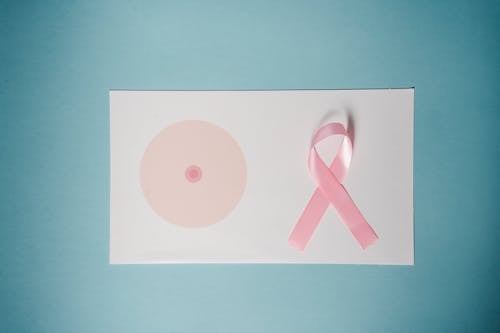
Early detection of breast cancer saves lives, which is why performing a breast self-exam (where you check your own breasts for lumps and abnormalities) is crucial. Prompt detection of cancer is what increases survival rates. Educating yourself on breast cancer symptoms and doing a breast self-exam each month is your best bet. Finding out the early signs and symptoms of breast cancer before it spreads and metastasizes could save you from having to undergo mastectomy surgery as well.
Early detection of breast cancer is also the key to getting more effective treatment options and increasing your chances of not only survival but a smoother recovery process. For this reason, performing a self-breast examination is an important part of cancer screening. Find out more about the breast self-exam below and how it can help maintain breast health. Let’s get started.
The Importance of a Monthly Breast Self-Exam
Apart from an annual mammogram and clinical exam by your doctor, most professionals recommend for adult women to perform self-breast exams at least once a month. This in-home procedure is vital for maintaining breast health and detecting breast cancer early before it escalates. At the early stage, cancer is much easier to treat and much more likely to be cured.
Studies show that 25% of women diagnosed with breast cancer felt their lump or other abnormalities through self-examinations, which prompted them to speak to their doctor. Though a mammogram detects very minute growth even before you can feel any lump, doing self-exams allow you to be more familiar with your body, especially how your breasts feel and look. When you get into the habit of doing this monthly, you understand your normal baseline.
As a result, you become more aware of changes in breast tissue, allowing you to immediately alert your doctor if you feel something unusual. Taking time to conduct your breast self-exam once a month means you assist your healthcare team in maintaining your breast health and overall wellness.
When is the Ideal Time to Perform a Breast Self-Exam?
All adult women must perform a self-breast exam once a month. If you have a regular menstrual cycle, performing the exam a week after your period ends is advisable. The logic behind this is that your hormone levels fluctuate each month during your cycle, impacting breast tissue. Once your menses start, breast swelling decreases. By the time your period is over, the breasts are less tender, making the exam easier to facilitate.
Meanwhile, menopausal women, those who have had a hysterectomy (removal of the uterus), or with extremely irregular cycles can pick one day each month. Choose a consistent date that you can remember, like the last day of the month or your favourite number. This ensures you won’t forget to do the exam.
How to Conduct a Breast Self-Exam
Conducting this self-assessment will only take a few minutes of your time. You can readily build it into your routine, so there should be no excuse to miss it. Do it when you’re dressing in the morning or changing into nightclothes. You can perform it while lying down in bed before sleeping or when you wake up. Alternatively, you can also do the exam in the shower. Here are three ways to get your breast self-exam done:

1. Visual Inspection Via Mirror
Remove your top and bra, then stand in front of a mirror. With your arms at the sides, visually inspect your breasts. Look for changes in breast shape, signs of selling, changes of nipple appearance, and skin dimpling.
Next, raise your arms above your head and look out for the same things. Finally, rest your hands on your hips and flex firmly. This will make your chest muscles flex, allowing you to see if there are any visual changes. Notably, the majority of breasts do not match, so nuances in each are normal. However, if there are noticeable puckering, dimpling, or changes on one side, report the results to your doctor.
2. Palpate in the Shower
Manual inspection in the shower means using your right hand to palpate your left breast while the left hand is behind the head, and vice versa. Many like this method because you are already naked in the shower, and soapy water makes it easy to glide your fingers over your chest.
Using the flat pads of your 3 middle fingers, press on every part of the breast using a circular motion. Start with light, medium, and then firm pressure. Check both breasts with the same circular pattern to check for irregularities.
Follow the circle pattern because this will ensure you cover every portion of your breast. Once you’re done pressing, check the tissue under your arm, especially near the armpit. You must also check under the areola and squeeze the nipple to check for unusual discharges. Perform this on both sides.
3. Manual Inspection While Laying Down
If you perform the exam laying down, you will notice that your breast tissue will spread out more evenly along your chest wall. Again, this is an excellent position to examine for changes, especially if you are well-endowed.
Place a pillow under your right shoulder and put your arm behind your head. Apply the same palpation technique noted above with three fingers and follow a circular pattern with your left hand. Check for lumps, hardness, knots, changes, and discharges. Assess the nipples and armpits as well. Finally, swap the pillow and check the left side.

Watch Out for These Signs and Call for Advice
When you feel unsure about a certain area, stay calm and speak to your physician for advice. Not all lumps or worrisome changes are cancerous. It could be a benign growth like an epidermoid cyst. Another reason for irregularities could be an infection like mastitis or fibroadenoma.
But should you notice anything unusual, follow your instincts and immediately call your doctor for advice to give you peace of mind. Watch out for these signs:
- Radical changes in the size, appearance, and feel of the breast
- A major difference in the look and feel of the nipple
- Puckering or dimpling of the skin surrounding the breast
- Feeling lumps, thickening, or hard spots in the tissue
- Nipple discharges (when not lactating)
- Unusual pain in the area that won’t go away
- Breast swelling in one or both sides
- The tissue feels unusually warm
- Sudden redness or darkness of skin
Stay Vigilant Against Breast Cancer
Performing your self-breast exam every month will ensure you maintain breast health and detect early signs of cancer. However, you must also remember to go for an annual breast clinical exam with your physician. On top of that, a mammogram is also required for people above 40 and those who have a strong family history of breast cancer.
Unfortunately, breast cancer runs in families and can be hereditary. So if your grandma, aunt, mom, or sister was diagnosed with the disease, there’s a higher probability that you will get it, too. For this reason, you must rely on mammography. It is an innovative tool for cancer screening that will help detect small tumours before they can be felt.
If you truly feel concerned because you are at high risk due to your family’s predisposition to breast cancer or other cancers, you can get a DNA analysis from CircleDNA. This comprehensive test will reveal gene mutations that increase your risk of developing the disease.
Armed with the right knowledge, you can implement diet changes such as eating more antioxidants. You can also be more proactive about breast screenings, from scheduling annual mammography and clinical exams to performing in-home monthly breast self-exams. Staying vigilant and proactive about your breast health will catch symptoms early and ensure you can prevent complications.






